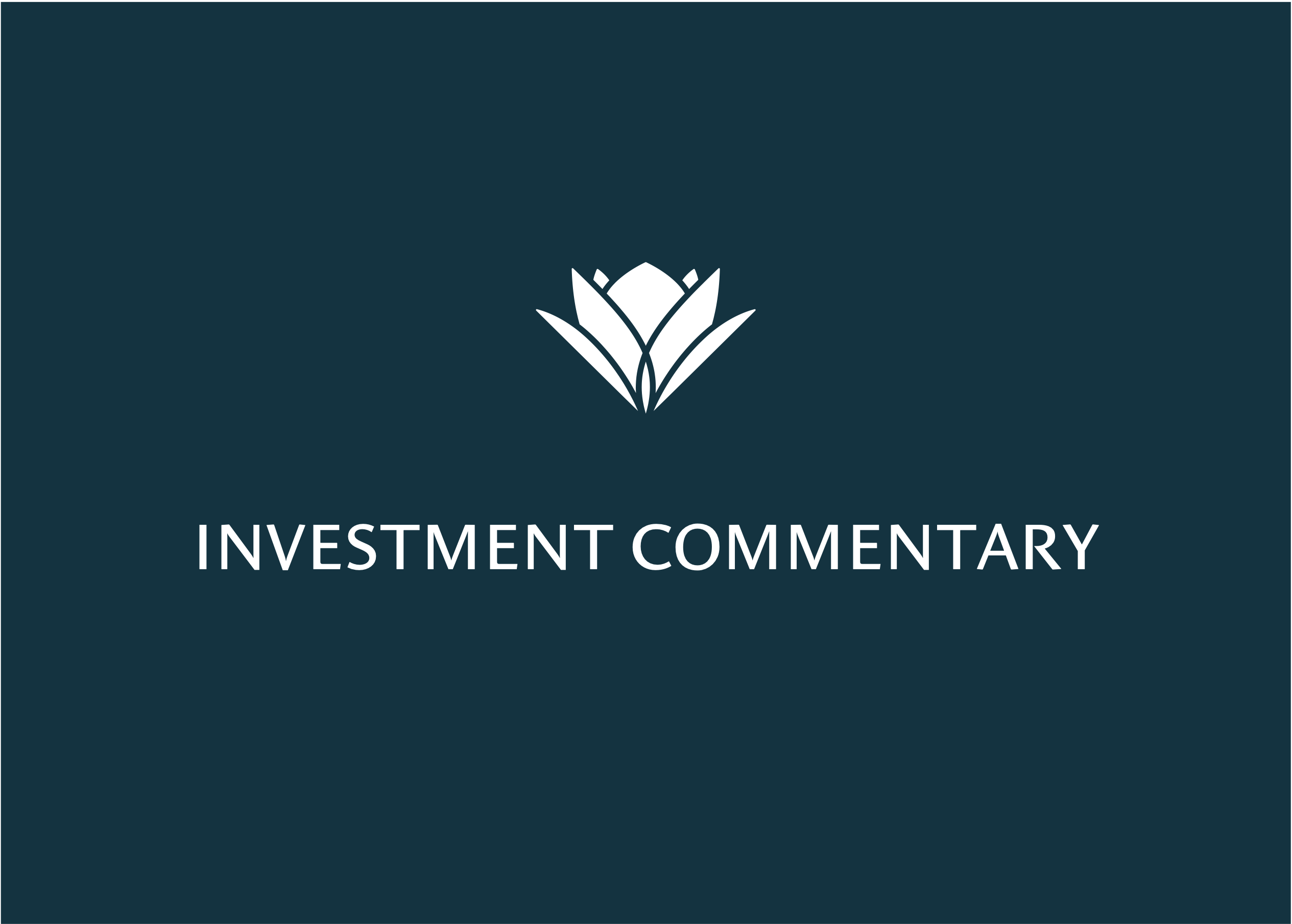Click here to view printable pdf.
Capital markets in 2023 showed investors’ resilience—or was it complacency? Clearer was yet another lesson on the dangers in following forecasts, especially those of policymakers, PhDs, and Wall Street strategists. The Fed’s interest rate hikes and tough inflation talk didn’t cause an “inevitable” 2023 recession after all.
2023 also showed the sea change in interest rates starting in 2022 did little to create a lasting sense of fear, even as stock and bond prices fell, a speculative bubble in crypto popped, and a banking crisis ignited. Investors also seemed unmoved by darkening geopolitics, including wars in Ukraine and Gaza, attacks causing a Suez Canal shipping crisis, and heightened tensions with Iran and China.
Then there is the bizarre 2024 U.S. presidential election, now shaping to be a decision between the two oldest general election candidates in history. One is under state and federal indictments seeking the power to exact revenge and pardon himself. The other is in deteriorating health and conspicuously hidden from public view. If investors are concerned about our choices for the most powerful job in the world, the market doesn’t show it.
That’s as far into politics as I need to get. Sure, the outcome could have some ramifications for capital markets; we will assess risk and return and invest accordingly. But maybe markets have it right, and little will ultimately change when it comes to economic policies, regardless of who wins.
It is a good time to remind ourselves (1) we are not clairvoyant; and (2) that’s O.K.
Knowing the future isn’t required for successful investing over time. The biggest danger is the hubris of thinking one knows the future. Mark Twain once warned, “It ain’t what you don’t know that gets you into trouble. It’s what you know for sure that just ain’t so.”
Feigning having all the answers and the ability to see around corners would make for good marketing and higher assets under management. In our industry, this is a common playbook for growth. Most are not being disingenuous; many believe they are clairvoyant. I have still yet to witness anyone zigging and zagging their way to making fortunes while avoiding losses.
It’s far better to invest by trying to first avoid being absolutely wrong. Doing so helps avoid permanent capital loss, but it also raises the odds of getting lucky over time.
Investing should therefore focus largely on price and value. The best hedge against severe losses (critical to amassing compounding gains over time) and macroeconomic risks is not in knowing exactly when to sell everything but rather owning things that have more value than the price paid. That’s why the best risk/reward opportunities are almost always found in times of turmoil, when investors excessively push down prices. That’s why every major market downfall looks like an obvious opportunity in hindsight.
The other thing about value is it’s an evergreen approach. That doesn’t mean it’s always rewarded. Markets have their own cycles, including fear versus greed and conservatism versus speculation. Greed and speculation have been hugely rewarded since the Great Financial Crisis, so much so that many now think understanding the business behind a stock and reading financial statements are futile, if not dangerous, activities.
I disagree, of course, and blame prolonged money printing for investors’ apathy to risk. Then again, it seems stimulus and even profligacy have come at little cost—just a short bout of inflation that’s already waning. Meanwhile, the housing market hasn’t busted, stocks are up, and the bond market has halted its punishment.
As a result, our monetary overlords look invincible, even if they have been constantly wrong in their forecasts along the way. One could be forgiven for believing in economic alchemy and the power of government and central bankers to manufacture prosperity and inoculate us all from pain.
We will maintain a healthy skepticism regardless and assume the costs have yet to be fully revealed. Bad markets will eventually come, exactly when is unknowable. Today, prices for stocks, real estate (especially commercial), and other asset types still look too high overall. Assets of all types seem to have little margin of safety and are thus susceptible to a future that isn’t all roses. This seems especially true for the biggest U.S. technology champions that today comprise a larger share of the overall stock market than ever before.
It seems prudent to assume as much. I am far from glum, however, because there are good things to buy cheaply. The gap in prices and valuation multiples between Big Tech stocks versus smaller, non-technology, and foreign stocks—is enormous. It is quite a bifurcated market. We are finding quality stocks at 10 times earnings or less while Big Tech darlings trade at 40 times earnings or more.
Certain areas of the market that have lagged in recent years still have compelling secular drivers, including within life sciences, infrastructure, materials, and industrials. Bifurcation in prices is also found within certain sectors. Take real estate for example. While the realities of higher interest rates and heavy debt loads plague many real estate holdings, markets are punishing REITs uniformly. We have been buyers of quality multi-family residential owners in the South with conservative balance sheets and plausible pricing power through Camden Properties Trust (Ticker: CPT), Mid-America Apartment Communities Inc. (Ticker: MAA), and Elme Communities (Ticker: ELME).
We are also accumulating Alexander & Baldwin (Ticker: ALEX) and its high-quality Hawaii commercial real estate and industrial lands. New management and a simplification strategy are game-changing. Money losing operations in farming, resort building, and road construction are now gone. The balance sheet looks fine. We bought at an average dividend yield of over 5%.
We increased exposure to smaller cap and foreign stocks in recent months, primarily through certain exchange traded funds (ETFs).
We also increased investment in one of my favorites, Markel Corporation (Ticker: MKL), bought CRH plc (Ticker: CRH), and re-entered Charles River Labs Inc. (Ticker: CRL). Our defense contractor holdings (and geopolitical hedge) increased with a first-time purchase of BAE Systems plc (Ticker: BAESY).
Our fixed income positions increased in duration somewhat. As mentioned in previous letters, higher interest rates are a boon for the long-term, conservative investor. We continue to increase our purchases of bonds to lock in higher rates and elevated “risk-free” income.
Firm updates
Our firm—your firm—has just concluded its third year. I’m pleased and grateful for what has been an extraordinary journey so far and the best three years of my life. We continue to grow our way: by wonderful people finding us. With no advertising or outbound marketing strategy, our growth comes from the referrals of our wonderful clients and professional partners. We know a referral is a huge compliment, and I’m always very moved by one’s expression of trust.
In the Fall of 2021, I started an investment vehicle that I had wanted for a long time, a fund designed for the very long term with focused, high-conviction investments yet capable of efficiently investing across asset classes and the world. Such funds are designed as limited partnerships and are colloquially called “hedge funds”—a phrase I hesitate to use.
The fund, Regency Capital Management Fund L.P., is (and will always be) a partnership, especially in attitude. I have kept quiet about it and deliberate in adding partners for several reasons, including limited investment opportunities and the fact that the Fund is only suitable for a fraction of clients. (Beside objectives and risk considerations, any investment must represent a very small portion of a partner’s net worth while satisfying the Fund’s investment minimum.)
With more investment ideas today, I’ve been sharing information about the Fund and extending invitations for investment. Its long-term orientation means I will never put much credence in short term performance—even what is now two years and change. However, being human, I admit the fund’s performance so far has me happily stupefied.
Kawika Shoji welcomed a baby boy in August to join his two girls. Kayla Cosby became a mom for the first time, welcoming a baby girl in November. Babies and moms are doing great.
Lastly, Regency Capital Management had its first “graduation” with Olina Cavedoni leaving to pursue a career in technology. In building our systems and raising the bar in numerous ways operationally, Olina found her calling. She’s currently studying coding and other engineering subject matter and will soon be building bigger, better things. We thank her and look forward to following her progress.
Neil Rose, CFA
The content provided in this document is for informational purposes and does not constitute a solicitation, recommendation, endorsement, or offer to purchase or sell securities. Nothing should be considered personal financial, investment, legal, tax, or any other advice. Content is information general in nature and is not an attempt to address particular financial circumstance of any client or prospect. Clients receive advice directly and are encouraged to contact their Adviser for counsel and to answer any questions. Any information or commentary represents the views of the Adviser at the time of each report and is subject to change without notice. There is no assurance that any securities discussed herein will remain in an account at the time you receive this report or that securities sold have not been repurchased. Any securities discussed may or may not be included in all client accounts due to individual needs or circumstances, account size, or other factors. It should not be assumed that any of the securities transactions or holdings discussed was or will prove to be profitable, or that the investment recommendations or decisions we make in the future will be profitable or will equal the investment performance of the securities discussed herein.

